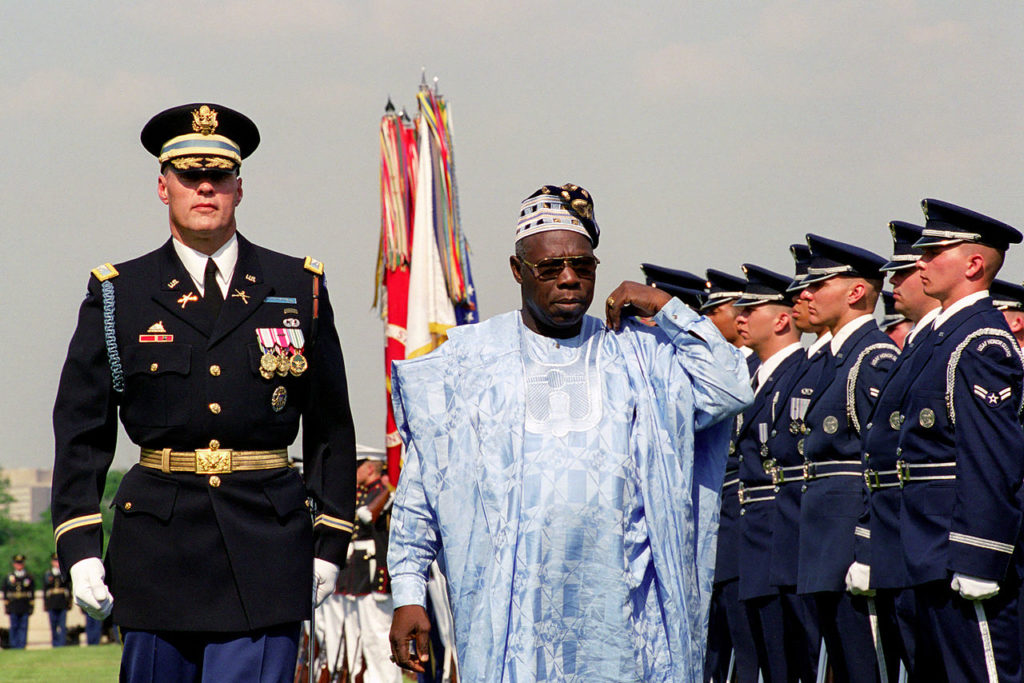- Your cart is empty
- Continue Shopping

Illuminating the Niger Area 2004 – 2020: A Chronicle of Nigeria and Her Power Sector Reforms
By Oti Francis
“A man who does not know where the rain began to beat him cannot know where he dried his body” –
Chinua Achebe
For EnergyHub customers, readers, and website visitors, we are committed to providing useful business intelligence in your weekly perusal and interaction with our blog, Energy Feeds. And if you are a service provider, supplier, or consumer at any level of the energy value chain, or specifically in the power sector, then you will find our series on Nigeria’s power sector reforms insightful. To best appreciate your place in the value chain of Nigeria’s electricity industry you must understand the historical background of the sector’s reforms and the forces that have driven and shaped it.
Introduction
On the surface, one expects that Nigeria, with her natural endowments in fossil fuels, solar and hydro resources, will excel greatly in catering for her local electricity needs. However, it may be surprising to discover that despite all the exertions in power reform, and reasonably improved generation capacity, she is able to deliver a paltry 4,000 MW to electricity consumers in the country. This leaves a huge demand gap for her 200million plus population, which needs at least 40, 000 MW to meet current household, commercial, and industrial electricity demands.
Therefore, a discourse on power generation, transmission, and distribution in Nigeria maybe a trip on a tortuous path. Since 1999, succeeding governments have made concerted efforts to rewrite the statutory instruments and build new infrastructures the power sector needs to thrive. To better understand the Nigerian electricity generation situation and appreciate the growth of its power sector, it may be apposite to chronicle the challenges the sector has been struggling to overcome over the decades, starting with the era of the monopolies – first, the Electricity Corporation of Nigeria (ECN) and later, the National Electric Power Authority (NEPA). It is then that we can envision the value of the reforms, which opened up the power sector to private sector participation.
Is it not a thing of wonder then that Nigerian politicians still use what should be taken for granted in other climes with similar resources and circumstances – regular power supply, as political campaign promise?
The Act
On March 11, 2005, President Olusegun Obasanjo finally signed the long-awaited ELECTRIC POWER SECTOR REFORM ACT 2004, breaking decades’ long jinx to electric power sector reform in Nigeria. The introduction of the law states inter alia: “ An Act to provide for the formation of companies to take over the functions, assets, and staff of the National Electric Power Authority, to develop competitive electricity markets, to establish the Nigeria Electricity Regulation Commission; to provide for the licensing and regulation of the generation, transmission, distribution and supply of electricity; to enforce such matters as performance standards, consumer rights, and obligations; to provide for the determination of tariffs, and to provide for related matters…”

The new vision for the power sector in Nigeria enunciated by the Obasanjo government envisaged 15,000 kilometers of new transmission lines, 16 new power plants promoted by government alone, as well as an unlimited number of IPPs, with the new impetus from the implementation of the Electric Power Reform Act. In 2002, the government awarded contracts totaling $1billion for three gas-fired plants at Okitipupa in Ondo State, Papalanto in Ogun State, and Ajaokuta (Geregu), in Kogi State, close to the sprawling Ajaokuta Steel Complex.
“The combined lack of capacity in transmission and distribution has meant that the Discos can only deliver a little less than 5000 MW of electricity to their consumers, as against available generation capacity from the Gencos reaching 12,000MW.”
Major players in the power industry worldwide waited with bated breath for the Federal Government to make good its pledge to sell its holdings in Power Holding Company of Nigeria, especially with the conclusion of the “unbundling” process and establishment of many autonomous units in 2006. The process was delayed many years due to a lot of problems – among them, the resistance to the passage of the Electric Power Reform Act 2004. The unbundling process first saw the creation of semi-autonomy of the zones, which formed 12 “Gencos” and “Discos”- meaning generation and distribution companies. These new companies, under the umbrella Power Holding Company of Nigeria, were later incorporated into independent legal entities, which were eventually offered for sale as independent entities to the private sector. However, due to fears of unavailability of buyers, the government has decided to concession the generation plants to interested investors with the technical competence to manage the plants.
When that sale of the Discos eventually took place under the administration of President Goodluck Jonathan, it became an anti-climax as largely underfunded consortia won the bids and because they were overleveraged in the buyout process, most of them have not been able to inject adequate capital into the distribution assets. In addition to the grossly under-performing distribution sector, the Federal Government has in turn not invested in the transmission infrastructure. The combined lack of capacity in transmission and distribution has meant that the Discos can only deliver a little less than 5000 MW of electricity to their consumers, as against available generation capacity from the Gencos reaching 12,000MW.
Power Generation
Nigeria started her first electricity generation project in 1896 in Lagos. The generators used at that time were able to supply 60 kilowatts of electricity. Subsequently, especially owing to the changing climes of colonial administrations, several companies had to take over power generation. The amalgamation of territories into what is now known as Nigeria in 1914 may have also accelerated the need for a national power generation project connected to a national transmission grid. Generation at this stage was intended for only colonial and industrial purposes. However, the Nigeria Electric Supply Company (NESCO) took over power supply in 1929 and was succeeded by the Electricity Corporation of Nigeria (ECN) in 1951.
Moreover, in 1962 the Nigeria Dams Authority was created to explore Nigeria’s hydroelectric resources. For possible administrative purposes, a merger between the ECN and NDA was already imminent. This merger would then birth the National Electric Power Authority (NEPA) in 1972. Across these timelines, power generation had always been a Federal Government responsibility.
Enter the Obasanjo Era
Until recently, Obasanjo’s role in resurrecting Nigeria’s electricity industry may have never been highlighted by critics until recent anticorruption queries began calling for his probe, and perhaps, crucifixion. However, in some way, their requests help cast a critical spotlight on how former President Olusegun Obasanjo handled the power sector reform during his two-term tenure (1999-2007).
Since the 1970s, the two significant contributions in Nigeria’s power sector have come from none other than Olusegun Obasanjo himself. As military head of state between 1976 and 1979, his contributions in the sector were unmatched and had sustained Nigeria until he became President and civilian Head of State in 1999. Before the establishment of NIPP, his technical committee was the same force that would go-ahead to deliver an unprecedented 4000 MW in a power sector that had thrived on 1600 MW. The results may have been short-lived, as most of the infrastructural facilities were old and would need new capacity to sustain the supply.
Under the Obasanjo administration, the need to overturn the old systems and ineffective structures governing the power sector was key to starting fresh conversations on electricity supply and reliability.
Two years into office, the 2001 National Electric Power Policy (NEPP) became instrumental to Obasanjo’s initiation of the Electric Power Sector Reform Act (EPSRA), which was eventually signed into law in 2005. This act focused on the sanitation and rehabilitation of the power sector to minimize the power supply deficit. Given the time it took to pass – four years, the ESPRA may be one of the most contentious bills to be passed in Nigeria’s legislative history. The passage of the bill gave rise to the establishment of the Nigerian Electricity Regulatory Commission (NERC) and set the tone for the incorporation of the Power Holding Company of Nigeria, where the various generation, transmission and distribution assets of the defunct NEPA were domiciled pending their unbundling and sale to private entities.
Before 1999, poor infrastructural management and asset maintenance, vandalism, corruption, and other factors had caused the power supply to fall below both generation capacity and the electricity billed. This had been the norm since 1980. The crippling loss ratio in the power sector was also inevitable. However, recent reports present a significant decrease in loss ratio since Obasanjo’s emergence in 1999-2007 to be over 30 percent
An integral part of the Obasanjo administration’s reform of the power sector was the transition of the National Electric Power Authority (NEPA) into Power Holding Company of Nigeria (PHCN) and unbundling of the latter into 18 corporate entities, comprising generation and distribution companies, and leaving transmission segment of the assets still in the hands of the government. It is germane to note that the ESPRA during Obasanjo’s tenure, provided the template and basis for talks on privatizing Nigeria’s power sector and roadmaps for future governments to navigate.
To be continued…
